The Art of Music

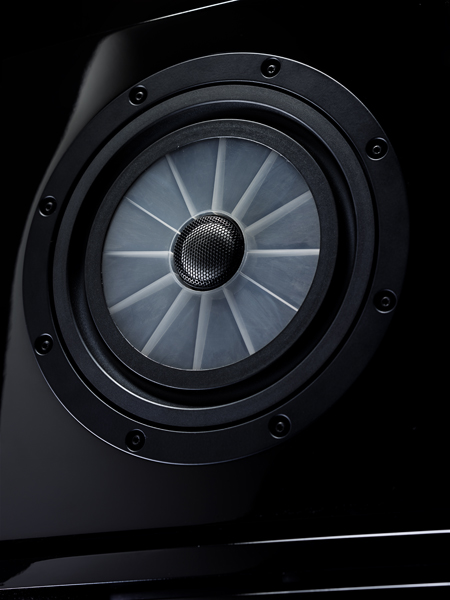
The primary hallmark of the entire Klimt series is a new, 7-inch concentric midrange/tweeter driver called the Music Center, which is ensconced in its own isolated enclosure. Unlike other concentric dual drivers, this one is flat as a pancake, which is said to avoid any horn-loading squawk and time/phase delays as different frequencies are launched from different parts of a cone diaphragm. Carefully spaced radial ribs resembling a spider web are designed to stiffen the diaphragm and dissipate standing waves in the surface to further reduce coloration. At the center of this diaphragm is a 1-inch silk-dome tweeter that uses a neodymium-ring magnet and large, vented pole piece. As a result, the Music Center can reproduce an astounding seven octaves from a single drive unit.
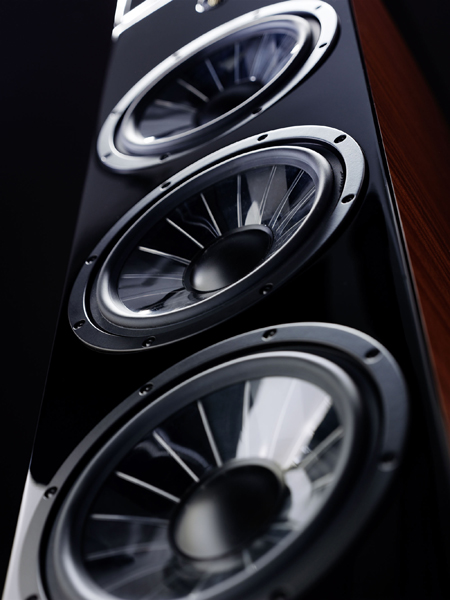
The woofers used in the Klimt series are only slightly more conventional, using a 10-inch cone-shaped diaphragm made of Vienna Acoustics' proprietary TPX polymer, as is the Music Center's main diaphragm. Also like the Music Center, the woofer cones are radially ribbed—leading them to be called Spider Cones—and both are assembled into the final drive units by German transducer specialist Eton.
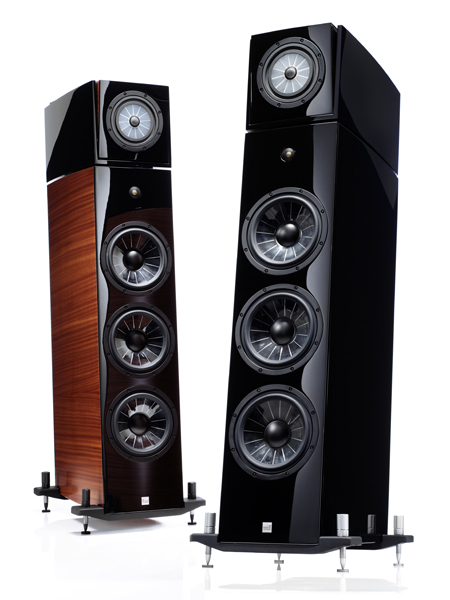
The flagship Klimt is called the Music, a ported, 3-way design with three 10-inch Spider-Cone woofers (two covering the lowest frequencies while the third handles the mid-to-upper bass from its own sub-enclosure), one 7-inch Music Center midrange/tweeter, and one 0.5-inch Murata supertweeter. With an impressive sensitivity spec'd at 91dB/W/m and power-handling capability of 50 to 500 watts, the frequency response is said to be 22Hz to 100kHz (no tolerance given).
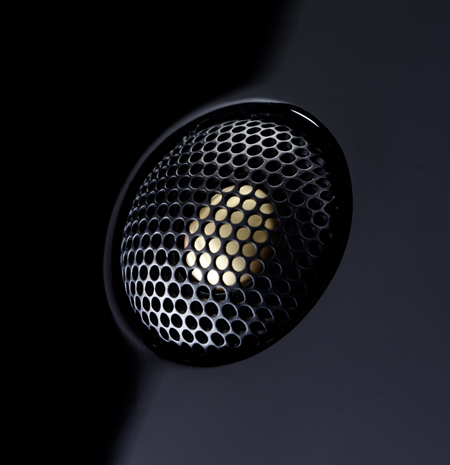
Wait a minute—100kHz? Humans can't even hear a quarter of that frequency, so why bother reproducing it? According to the company, "this lends an ease and air to the music that occurs naturally in concert halls." But there's no commercially recorded audio with any information in that region, so the question remains. My answer is this—if a device can reproduce frequencies well beyond the human hearing range, it won't struggle to reproduce any frequencies within that range, which should, in principle, lead to a greater sense of ease. Of course, this effect is minimized if the frequency responses of the other devices in the signal chain aren't similarly extended.
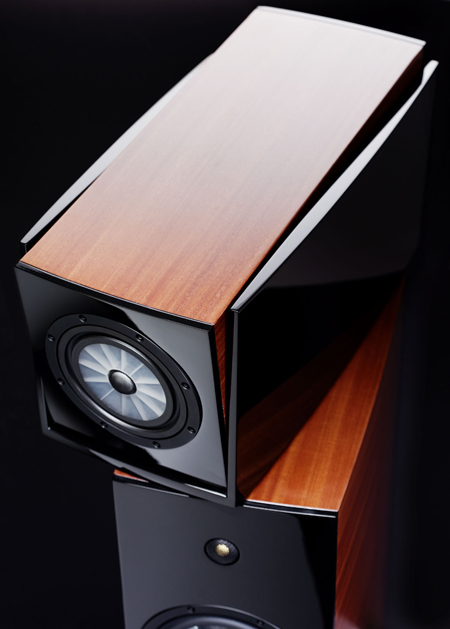
Another innovation in this speaker is the Music Center's enclosure, which is mechanically decoupled from the rest of the cabinet on a precision-machined aluminum swivel joint. This allows the driver's orientation to be adjusted with respect to the main cabinet in two dimensions—tilt (front-to-back angle) and toe-in (right-to-left angle)—making it much easier than usual to integrate the speaker into the room.
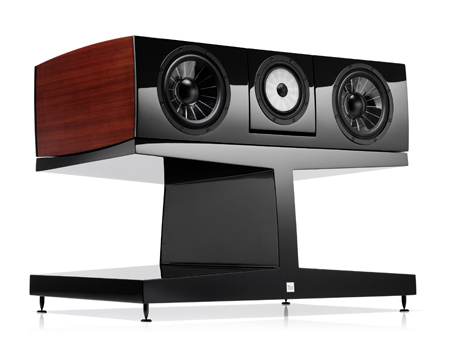
To assemble a surround system, you'll need a center-channel speaker, and the Poetry is an ideal choice to match the Music at the front left and right positions. The Poetry includes one 7-inch Music Center and two 10-inch Spider-Cone woofers, which are identical to the corresponding drivers in the Music. Thanks to its isolated enclosure, the Music Center can be tilted for optimum performance, though it can't be angled from side to side. With a sensitivity of 90dB/W/m and power-handling capability of 50 to 300W, the frequency response is 32Hz to 20kHz—no supertweeter in the Poetry.
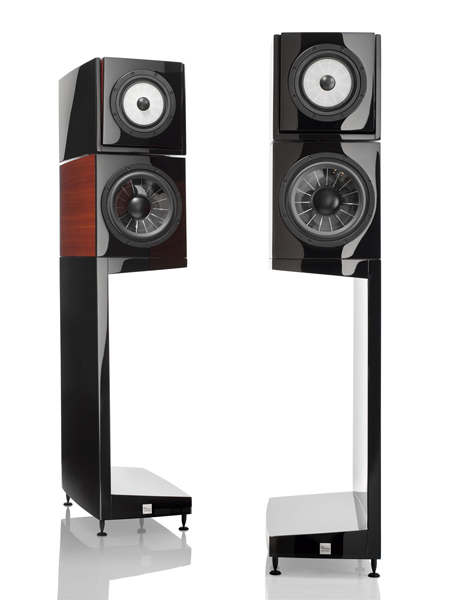
Then there are the surround speakers. Of course, you could put the Music in these positions as well as the front left and right, but another, perhaps more practical and certainly less expensive option is available—the Kiss, which has one Music Center and one 10-inch Spider-Cone woofer. The Music Center enclosure can be tilted and toed in as needed to integrate the speaker into the room's acoustics. Its frequency response is 38Hz to 20kHz with a sensitivity of 89dB/W/m and power-handling capability of 50 to 180W.
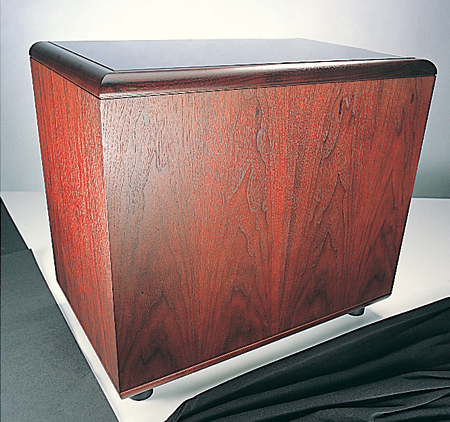
There is no subwoofer in the Klimt series—in fact, the only sub offered by Vienna Acoustics is the Subson, which doesn't fit the Klimt's aesthetics. So distributor Sumiko Audio recommends a sub from British low-frequency specialist REL Acoustics, another of Sumiko's client companies. The Studio III is REL's flagship product, claiming to reach an unbelievable 9Hz at –6dB in-room.

While a complete Klimt system doesn't reach six figures, it still ain't cheap by any means. A 5-channel system with two Musics, one Poetry, and two Kisses lists for $52,000; if you want the Music in the surround positions, up that to $64,000. The REL Studio III subwoofer is another $9995, or you could opt for two or four REL B1 subs at $2195 each (black finish), which would give you much smoother bass throughout the room than any one sub can deliver and still get down to 13Hz at –6dB. Any way you slice it, the Vienna Acoustics Klimt series should produce art for your ears, just as a Gustav Klimt painting provides art for your eyes.

























































